Let us take you on a journey through the Hashemite Kingdom of Jordan, a land where ancient history and breathtaking landscapes converge to create an unforgettable travel experience. This 7-day road trip (spanning 8 calendar days with arrival and departure) will guide you through Jordan’s most magnificent treasures – from floating in the mineral-rich Dead Sea to wandering through the rose-red city of Petra and sleeping under star-filled desert skies.
Quick Facts About This Trip
- Total Distance: Approximately 1000 km (620 miles)
- Budget: $100-130 per person per day (mid-range, not including flights)
- Best Time to Visit: March-May or September-November (mild temperatures)
- Transportation: Rental car
- Visa: Available on arrival or through Jordan Pass
- Language: Arabic is official, but English is widely spoken in tourist areas
- Ideal For: History enthusiasts, adventure travelers, photographers, and cultural explorers
- Terrain: Varies from desert landscapes to mountains and seaside
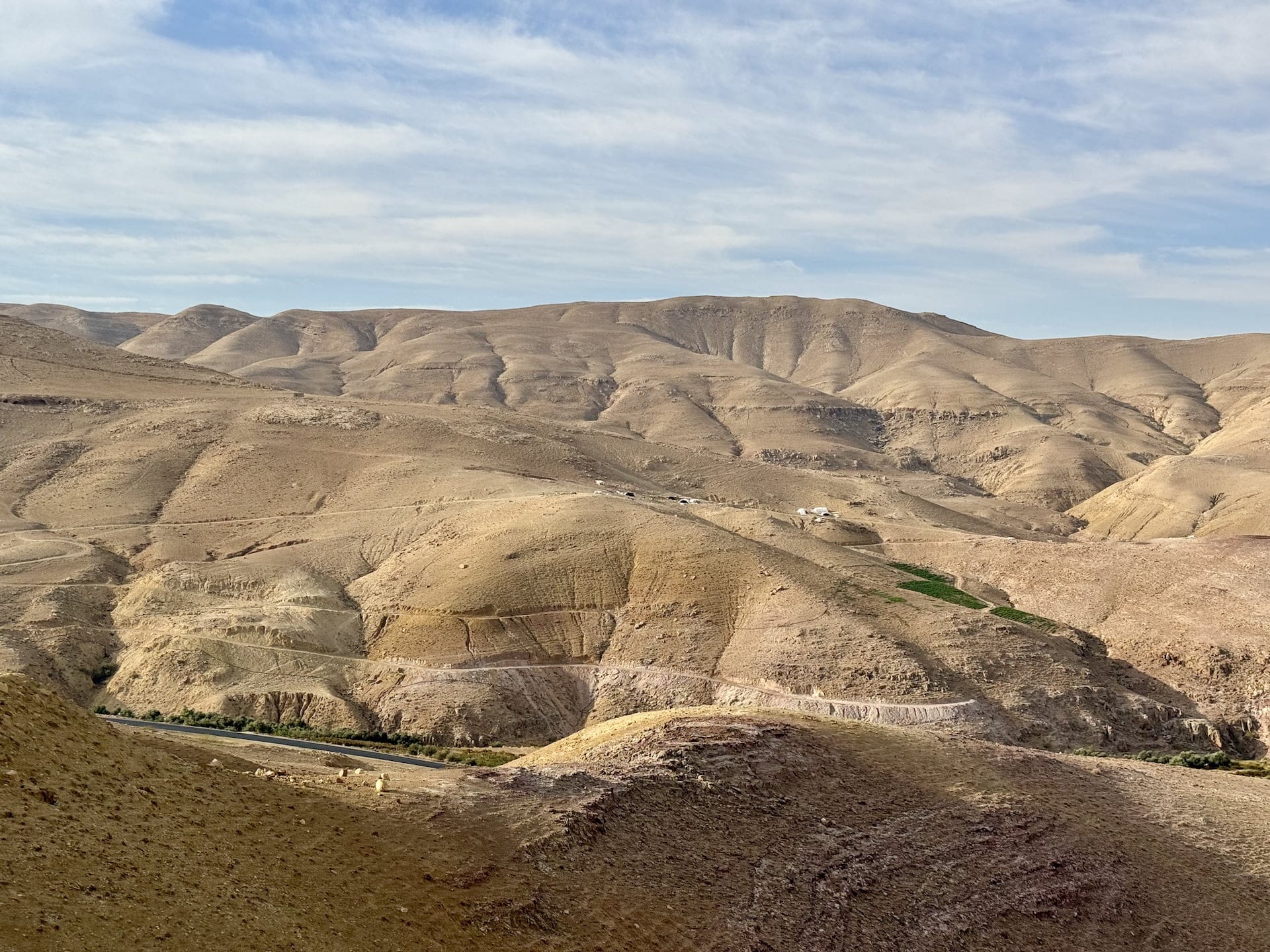
Planning Your Jordanian Adventure
Jordan may be modest in size, but it packs an extraordinary punch when it comes to historical treasures and natural wonders. This carefully crafted itinerary forms a loop beginning and ending near Amman, whisking you through millennia of history, otherworldly landscapes, and refreshing waters along the way.
Before you embark on your Jordanian odyssey, keep these essentials in mind:
- The Jordan Pass is your golden ticket – purchase it before arrival to include your visa fee and entry to over 40 attractions including Petra
- Pack for a cultural experience – modest dress is appreciated, especially in religious sites and local communities
- Prepare for nature’s mood swings – desert temperatures can plummet dramatically after sunset
- Jordanian driving is an adventure unto itself – particularly in Amman’s chaotic streets
- Early birds catch the wonders – start your days at dawn to avoid crowds and midday heat
- Pack for diverse waters – swimwear is essential for both the mineral-laden Dead Sea and the coral-rich Red Sea
- Cash is king – while credit cards are accepted in tourist areas, many smaller establishments and attractions prefer Jordanian Dinars
Jordan Itinerary at a Glance
First Half: Historical Sites & Natural Wonders
- Day 1: Arrival and transfer to Madaba
- Day 2: Dead Sea and Mount Nebo
- Day 3: Jerash and Amman
- Day 4: Wadi Mujib and transfer to Petra (Wadi Musa)
Second Half: Ancient Wonders & Desert Adventures
- Day 5: Full day at Petra
- Day 6: Wadi Rum desert experience
- Day 7: Aqaba and the Red Sea
- Day 8: Return journey and departure
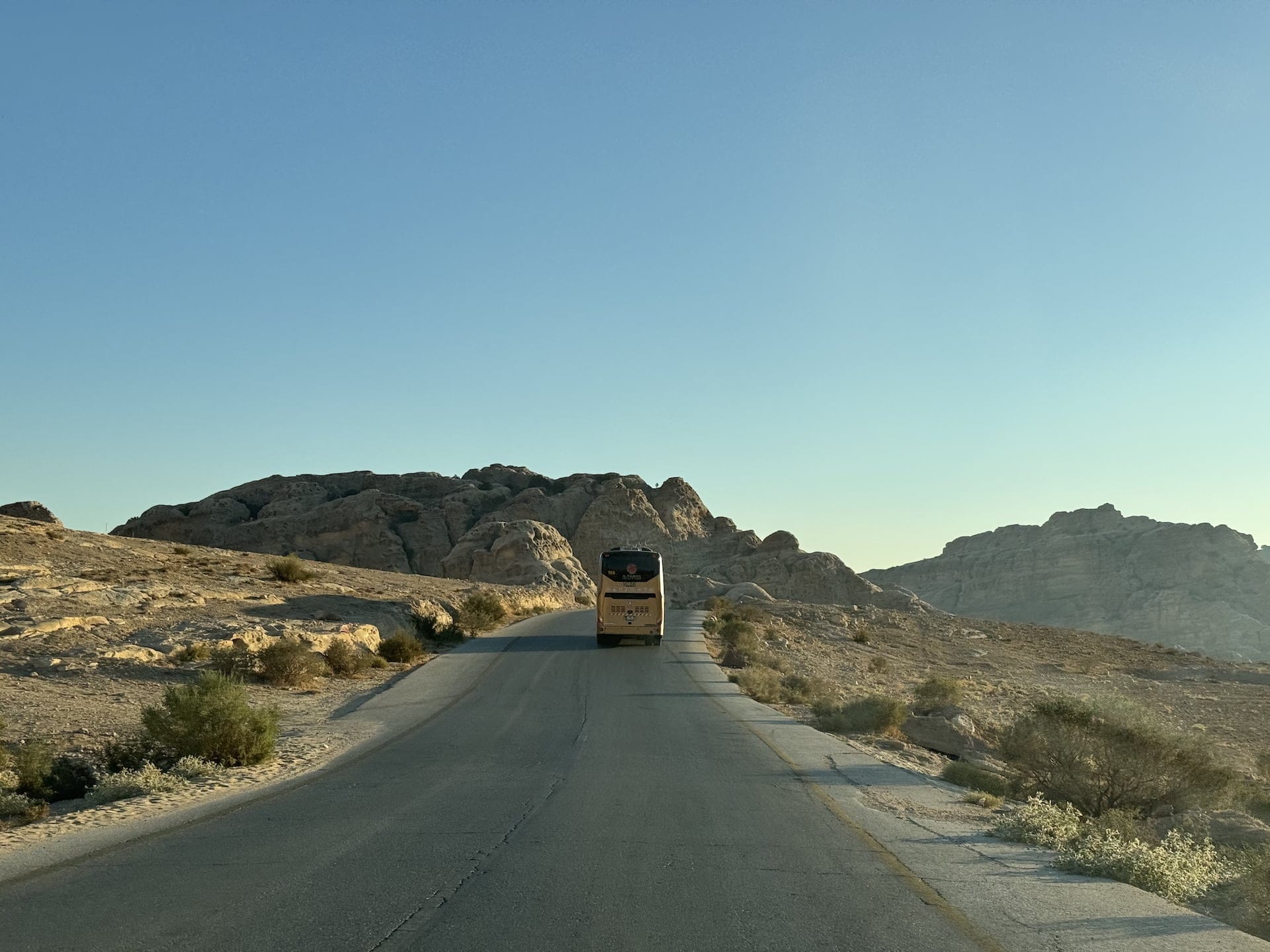
Jordan is a mesmerizing tapestry of historical wonders and dramatic natural beauty. With UNESCO World Heritage sites scattered across starkly beautiful landscapes, a road trip is unquestionably the best way to experience this Middle Eastern gem – which is precisely what Andrea and I did during an unforgettable week in an October. While one week isn’t ideal (you could easily spend much more time exploring Jordan’s roads), we couldn’t arrange more time off work that year due to our Southeast Asian trip.
You’ll likely arrive at one of Jordan’s two main airports: Queen Alia International Airport (AMM), located about 35 kilometers (22 miles) south of the capital, or Aqaba Airport (AQJ) in the country’s southern tip. We chose the former, but you can actually complete the entire route in reverse, so it doesn’t really matter which you pick. The reverse direction might actually be more practical as it gives you time to adjust to Jordanian driving before facing the final boss: Amman.
Why Madaba Makes the Perfect Base
For the first leg of our journey, we established our headquarters in charming Madaba – a decision that proved to be quite strategic. Located closer to the international airport than downtown Amman itself, this ancient town serves as an ideal launching pad for exploring the Dead Sea region while offering easy access to both the capital and the northern ruins of Jerash.
What makes Madaba truly special is its atmosphere – a refreshing contrast to Amman’s frenetic energy. Here, among Byzantine mosaics and friendly locals, you’ll find a peaceful respite after each day’s adventures. The town itself deserves your attention, with its remarkable 6th-century mosaic map of Jerusalem and the Holy Land (housed in St. George’s Church) and vibrant local markets. We’ll share more about Madaba’s hidden treasures in a future article!
Renting a Car in Jordan
All major car rental companies operate in the country, and the easiest way to compare offers is through an aggregator site (like Rentalcars.com). We started looking for rental cars very close to our arrival date, which meant many international chains had limited availability. Fortunately, we found Monte Carlo Rent a Car, a local Jordanian company – and we didn’t regret our choice at all. Pick-up and drop-off went quickly and smoothly, and they were very kind and helpful, especially when we locked our keys in the car at Wadi Mujib: someone immediately set out with a spare key to help us. (This did incur an additional cost, of course.)
When renting a car in Jordan, photograph any existing damage before leaving the lot. Most rental agreements don’t allow driving across borders into Israel or other neighboring countries, so check your contract carefully.
We took on the road with a Nissan Sunny, which was generally adequate, though it struggled on steeper inclines. If you plan to travel along Highway 35 or explore around Wadi Musa, you might want to consider something more powerful. To be honest, the automatic transmission was terrible, and it was strange how the car would lock itself a nanosecond after closing the doors – which is how we managed to leave the keys inside – but it still completed our 8-day journey without any real problems.
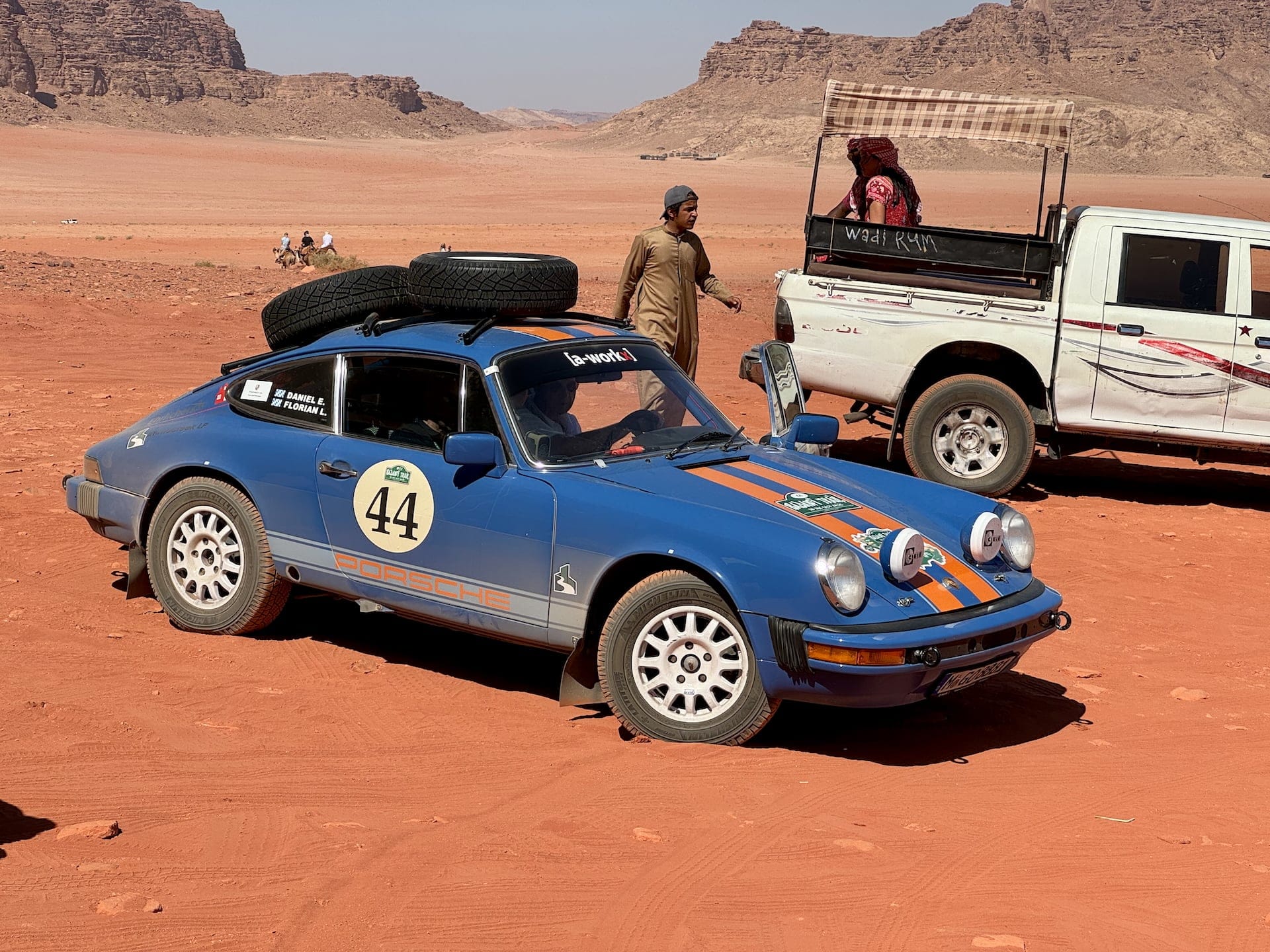
Road Conditions and Driving in Jordan
The road network is in good condition overall. You might encounter poorer road conditions in cities or on side roads, but if you stick to the established routes, you won’t need a 4×4 vehicle. The country’s backbone consists of three principal north-south highways: the Dead Sea Highway (Route R65), the historic King’s Highway (Route 35), and the Desert Highway (Route 15). Following our itinerary will let you experience all three, each with its distinct character. The King’s Highway stands out as the crown jewel – a 5,000-year-old trade route (yes, periodically updated) that winds through breathtaking mountain scenery. Though it’s the slowest option, its beauty is unparalleled. A proper Jordanian road trip would ideally cover the entire route, but even the section we managed to drive left us speechless.
As for driving etiquette: well, it’s very Middle Eastern. If you’re coming from a Western country (especially the United States), it might seem terrifying at first. It appears that nobody follows any rules (and in fact, they don’t), lanes and other road markings are merely suggestive, and traffic lights often serve only decorative purposes. If you’ve driven somewhere in South America or the Caribbean, the situation isn’t that much worse – and I’d place it somewhere around Egypt and Georgia (the country!) on the “how scary is it for Westerners to drive here” scale. Rural areas offer blissfully empty roads and surprisingly courteous fellow drivers, but Amman’s traffic requires nerves of steel and lightning-fast reflexes.
One peculiar hazard deserves special mention: Jordan’s inexplicable obsession with speed bumps. These suspension-testing obstacles appear everywhere – even on ruler-straight highways miles from any human settlement. Sometimes they’re properly marked, but more often, they lurk in stealth mode, waiting to launch unsuspecting rental cars airborne. Outside of Amman, these unexpected humps pose the greatest danger to foreign drivers – maintain vigilance at all times. While we successfully navigated from the airport to Madaba in complete darkness without incident, the limited lighting in many areas makes nighttime driving a challenge best avoided when possible.
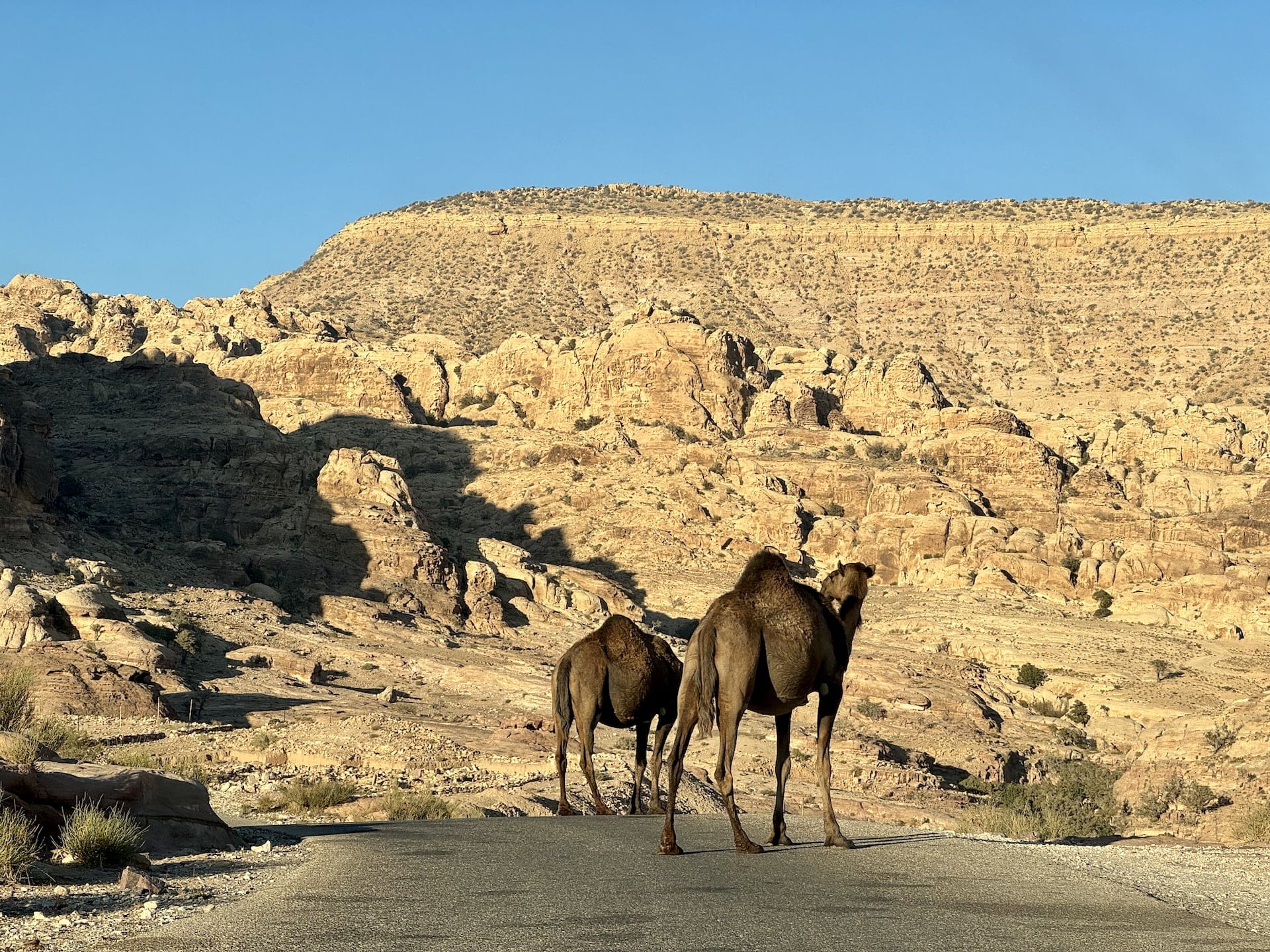
Best Time to Visit Jordan
Many travelers picture Jordan as an eternally scorching desert landscape, but this is only partially accurate. While much of the country is indeed arid, temperatures can vary dramatically. Winter months (December-February) can be surprisingly cool, with significant rainfall between November and April. Our October visit hit the sweet spot – comfortable temperatures for exploring, warm enough for swimming in both the Dead Sea and Red Sea, and only a sprinkle of rain on a single day.
It’s important to prepare for the fact that in the desert (e.g., Wadi Rum), nights are much cooler than days – in our case, the temperature dropped from over 30°C (86°F) to around 10°C (50°F), but fortunately, the tents were well-equipped with blankets.
Detailed Day-by-Day Itinerary
Day 1 – Arrival & Madaba: Where Your Journey Begins
We arrived in the evening on the first day, so we really only had time to pick up the car from the local rental company a few minutes from the airport (which provided free transfers), drive to Madaba (about 40 minutes including getting lost), check into our accommodation, and quickly have dinner shortly before midnight at a place that was actually closed – but characteristically of Jordanian kindness and hospitality, they didn’t tell us that and cheerfully served us anyway.
If you’re fortunate enough to arrive earlier, spend your remaining daylight hours wandering Madaba’s historical center, where ancient mosaics and biblical history await around every corner.
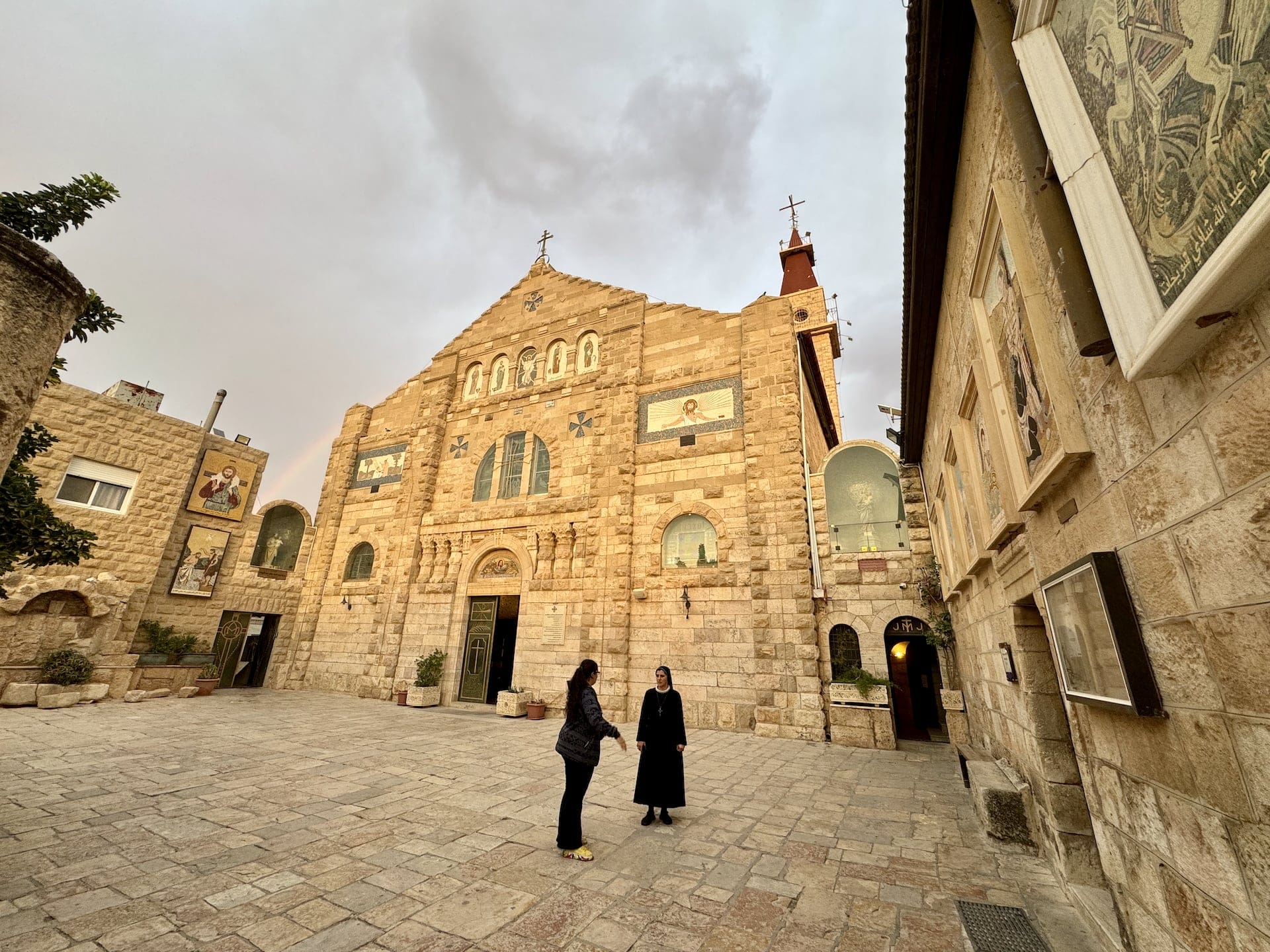
Day 2 – Dead Sea & Mount Nebo: Between Heaven and Earth
On the second day, it’s best to start early. After about a 1-1.5 hour drive, we arrived at the Dead Sea, where while public beaches exist, the optimal experience comes via a day pass at one of the shoreline resorts. This allows you to use the pools (and of course go down to the Dead Sea itself), and in most cases, the price includes lunch or some form of consumption. We paid 35 JOD (~$50 USD) with lunch at the Dead Sea Spa Resort, though at more expensive places this can cost up to 70 JOD (~$100 USD). If the Dead Sea experience is your main goal, a cheaper option will be perfectly fine. We didn’t book in advance, just showed up at reception.
While credit cards are widely accepted in hotels and larger restaurants, always carry Jordanian Dinars (JOD) in cash for smaller establishments, entrance fees, and tips. ATMs are readily available in cities but can be scarce in rural areas.
When we visited, there was no crowd at all, neither on the Dead Sea shore, where we had plenty of space both on land and in the water, nor in the pools where we were practically alone most of the time. The tranquility was only occasionally broken by the dull thuds of the Iron Dome from the opposite shore – we were visiting Jordan during a rather volatile period, which might explain why there weren’t many tourists.
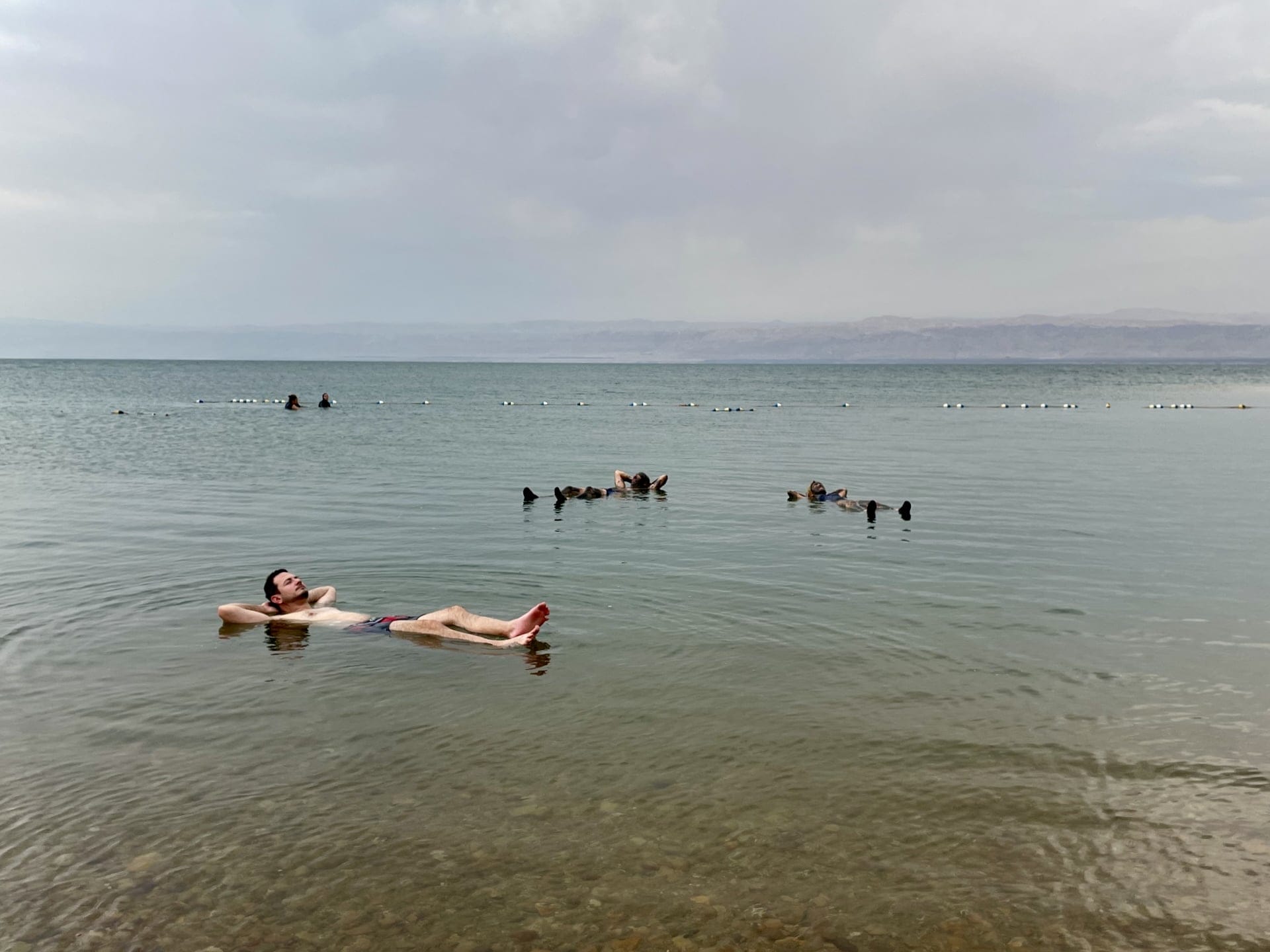
After lunch and a final float, we began our journey back toward Madaba, making an essential detour to Mount Nebo. This sacred hill, where Moses gazed upon the Promised Land before his death, offers both spiritual significance and breathtaking panoramas across the Jordan Valley. The modest entrance fee of 3 JOD (~$4 USD) – not included in the Jordan Pass, notably – grants access to both the magnificent views and the church that houses stunning Byzantine mosaics. We returned to Madaba in the late afternoon, with time to explore the historic town center.
Day 3 – Jerash & Amman: Ancient Splendor and Modern Bustle
For enthusiasts of Roman history, the ancient city of Jerash stands as one of the world’s most magnificent and well-preserved archaeological treasures. Located roughly 80 km (50 miles) north of Madaba, the journey theoretically takes 1.5 hours, but Amman’s notorious traffic jams make 2-2.5 hours a more realistic expectation. The sprawling ruins, with their imposing colonnaded streets, majestic temples, and perfectly preserved theaters, deserve at least half a day of exploration.
After immersing ourselves in Roman grandeur, we ventured into Amman itself – a city whose driving conditions had acquired legendary status in our pre-trip research. The reputation proved well-earned, as even the bypass roads featured a trilogy of fender benders within our brief passage (thankfully, none involving us). Andrea navigated the chaos with impressive skill, but for our actual sightseeing, we opted for a more strategic approach: parking at City Mall near King Abdullah II Street and using Uber to reach the central attractions. This gave us a stress-free afternoon experiencing the capital’s highlights, including the magnificent Roman Amphitheater and the historic Citadel with its panoramic city views. As evening descended, we returned to our peaceful Madaba haven for one final night.
Pack modest clothing regardless of when you visit. Women should bring scarves to cover shoulders in religious sites, and both men and women should avoid shorts in most public places outside of beach resorts.
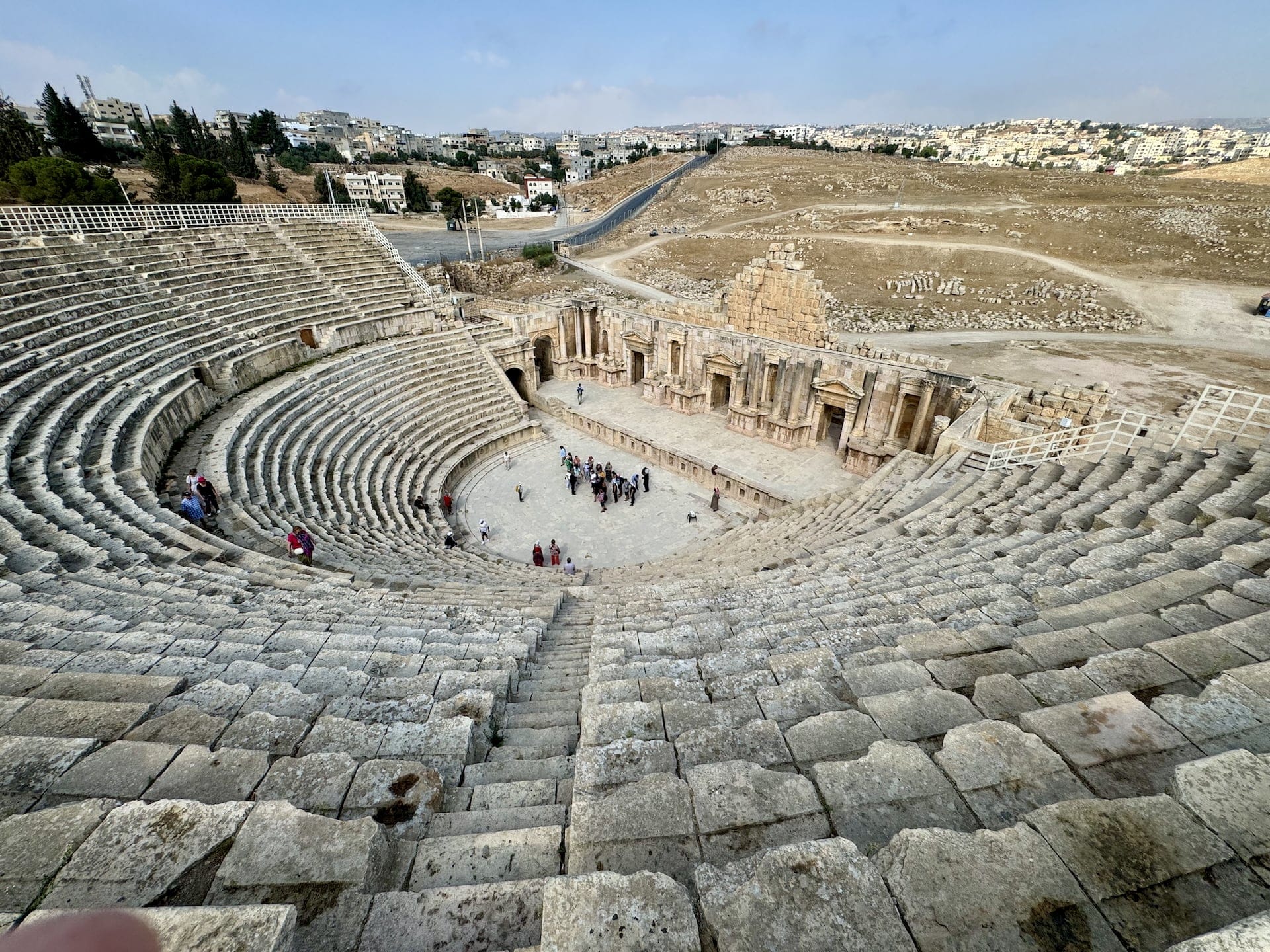
Day 4 – Wadi Mujib & Journey to Petra (Wadi Musa): From Slot Canyon to Ancient City
Day four began with farewell glances at Madaba as we embarked on our southward journey along the Dead Sea Highway (Route 65). Our itinerary included an exhilarating stop at Wadi Mujib – Jordan’s answer to the slot canyons of the American Southwest, but with the unique twist of actively wading and swimming through crystal-clear waters that carve their way toward the Dead Sea. This natural water park adventure costs 21 JOD (~$30 USD) – another attraction not covered by the Jordan Pass – and deserves its own detailed article (coming soon!).
Our canyon adventure extended longer than planned thanks to our impromptu demonstration of how to lock keys in a rental car. The Monte Carlo team dispatched a rescuer from the airport with a spare key, adding an unplanned chapter to our travel tale. Eventually, we continued our journey along Routes 65 and 35, arriving in Wadi Musa (the gateway town to Petra) by early evening. We checked into our accommodation, eager for the next day’s encounter with Jordan’s most famous archaeological wonder.
Day 5 – Petra: Walking Through Time
No Jordanian itinerary would be complete without dedicating at least a full day to the ancient Nabataean city of Petra, whose rose-hued facades have captivated travelers for centuries. While history enthusiasts and photography lovers could easily spend multiple days exploring the vast site with its numerous side trails and viewpoints, our one-day timeline still allowed us to experience Petra’s most magnificent highlights.
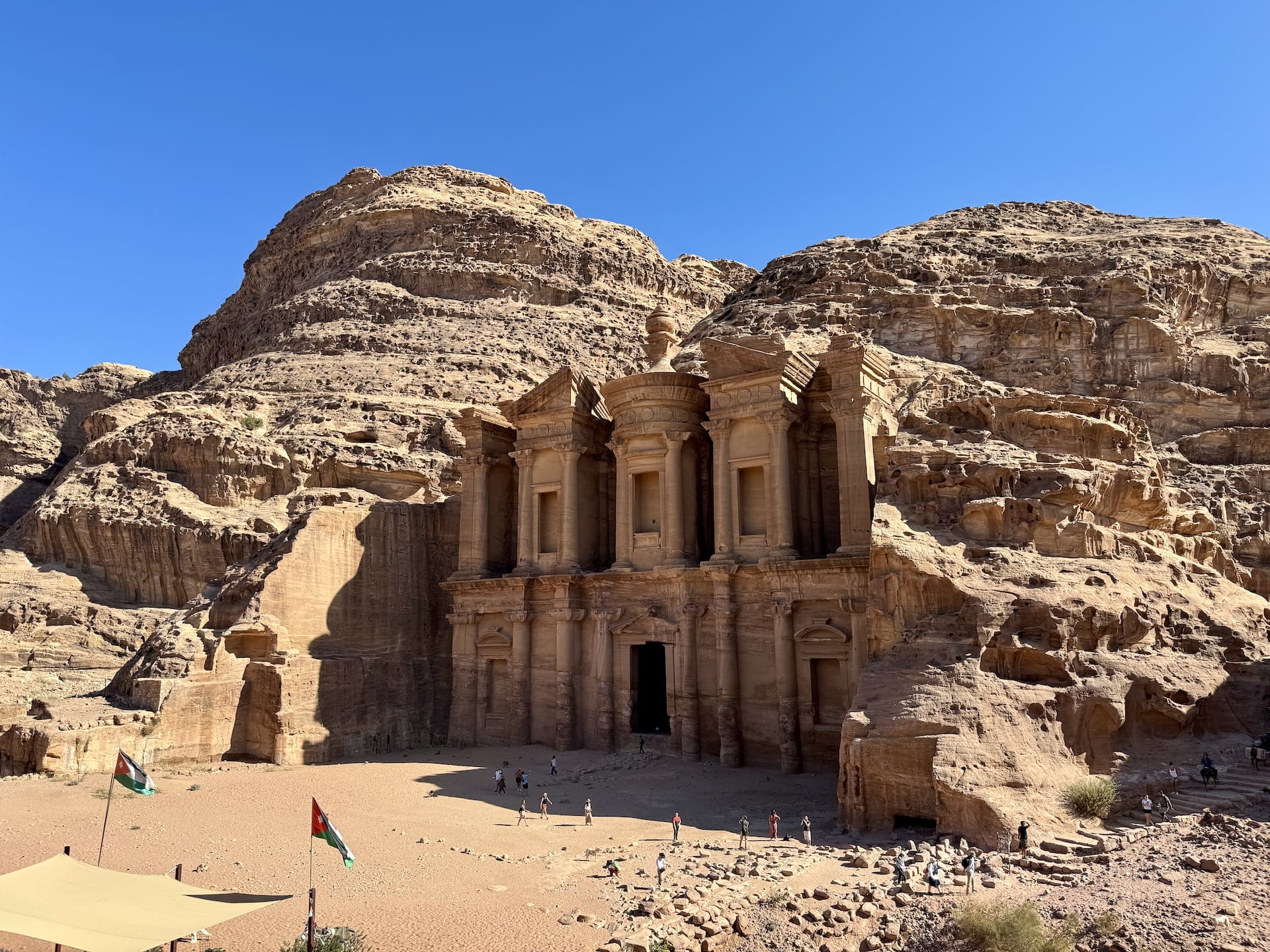
We walked the length of the Siq (the dramatic natural gorge leading to the site), gasped at the first glimpse of the Treasury (Al-Khazneh) revealing itself through the narrow canyon walls, explored the Royal Tombs and the Colonnaded Street, and climbed the 800+ steps to the awe-inspiring Monastery (Ad-Dayr) perched high above the main site. This last feat felt particularly significant as I was mid-rehabilitation from an ankle fracture, but Petra’s magic provided motivation to complete the challenging ascent.
Consider purchasing the Jordan Pass before your trip if you plan to visit Petra. It includes your tourist visa fee and entrance to over 40 attractions including Petra, saving you both money and time waiting in lines.
As shadows lengthened across the ancient stone, we made our way back through the Siq, then the evening was dedicated to rest and recovery, preparing for an early departure toward our next extraordinary destination. A comprehensive article about our Petra experience will follow soon!
Day 6 – Wadi Rum: Mars on Earth
Jordan’s landscape diversity reaches its zenith in the ethereal desert expanses of Wadi Rum, where towering sandstone monoliths rise from rust-colored sands to create scenes so otherworldly they’ve doubled for Mars in numerous films. The optimal way to experience this protected desert wilderness is through an overnight stay in a Bedouin camp – not an exercise in roughing it, but rather an opportunity to experience traditional hospitality with modern comforts.
Accommodation options range from simple but comfortable traditional tents to luxurious “martian domes” and transparent bubble tents that allow you to stargaze from your bed. Regardless of your chosen comfort level, most packages include guided tours through the desert’s most spectacular formations, where you’ll discover ancient petroglyphs, natural rock bridges, and dunes that shift with the desert winds. As evening approaches, traditional Bedouin dinners (often prepared in underground sand ovens) precede nights of stargazing in some of the darkest skies you’ll ever encounter.
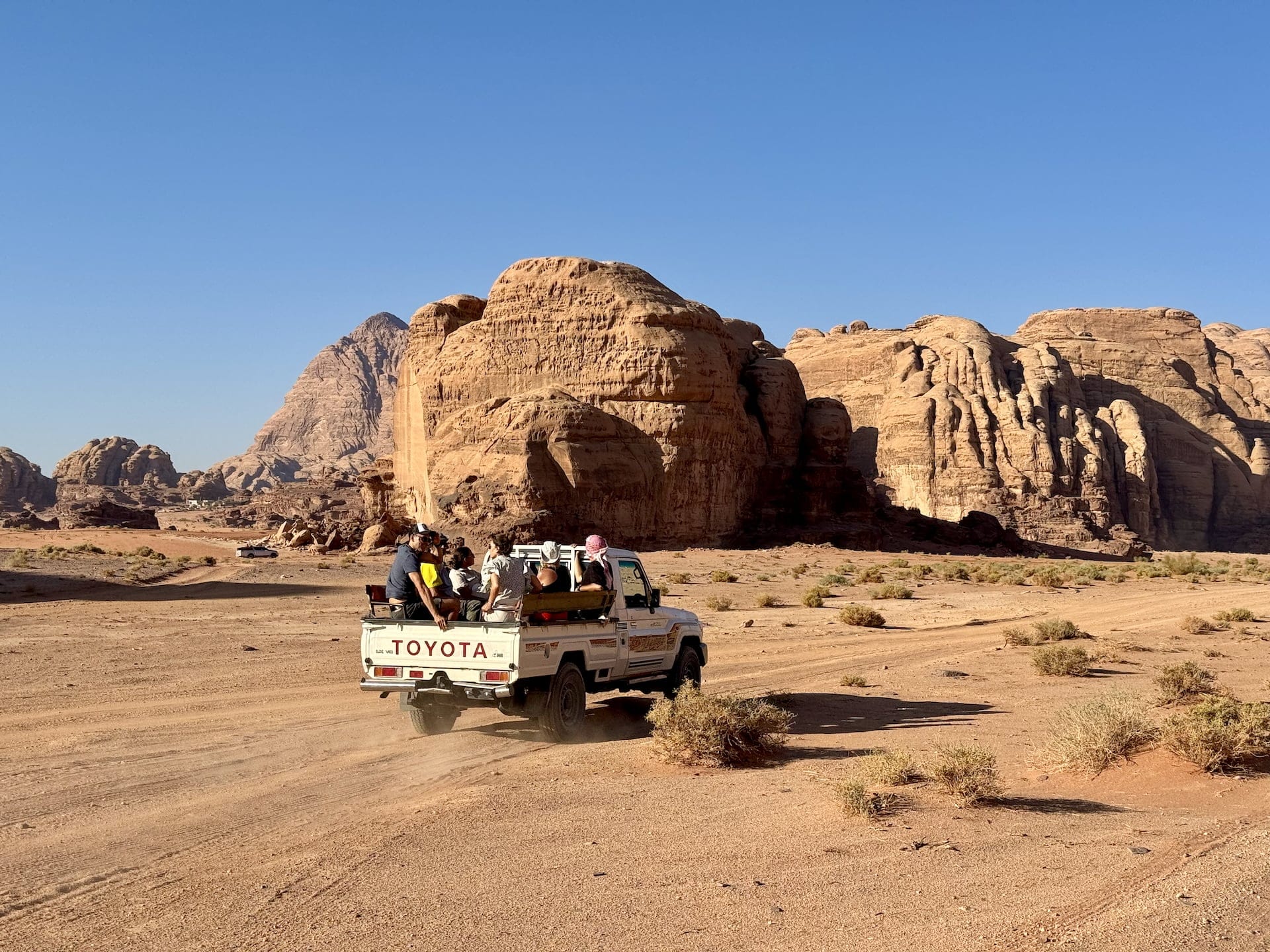
Day 7 – Aqaba: Seaside Serenity
A short drive from Wadi Rum brings you to Aqaba, Jordan’s window to the Red Sea and a welcome aquatic finale to your desert adventures. We arrived in the morning, eager to experience the legendary marine life that thrives just offshore. Even casual snorkelers can witness an astonishing underwater ecosystem mere meters from the beach – vibrant coral formations teeming with kaleidoscopic fish. For those seeking deeper explorations, numerous boat operators offer trips to premier snorkeling and diving sites further offshore. In a charming cross-cultural moment, we even helped one local boat operator create a Hungarian-language sign for his growing international clientele.
The afternoon affords time to wander through Aqaba’s blend of historic sites and modern amenities, perhaps visiting the 16th-century Mamluk Fort or simply enjoying the relaxed coastal atmosphere. Your Jordanian adventure deserves a proper culinary send-off – indulge in a farewell feast of Middle Eastern delicacies while watching the sun set over the Red Sea, with Saudi Arabia, Egypt, and Israel visible across the waters.
Day 8 – The Scenic Return: Desert Highway and King’s Highway
Our final day began with an early departure from Aqaba, facing the 4-4.5 hour drive north toward Queen Alia International Airport via the Desert Highway (Route 15). However, since this route, while efficient, lacks the scenic drama of Jordan’s other highways, we opted for a compromise: beginning on the faster Desert Highway before detouring onto Route 50 just before Al-Qatarna, which connects to the spectacular King’s Highway.
This worthwhile detour (adding 1-1.5 hours to the journey) rewarded us with breathtaking views of the “Jordanian Grand Canyon” and the impressive Mujib Dam. The towering sandstone cliffs and sweeping valleys create a magnificent final chapter to your Jordanian visual story. If your schedule permits an extra day, consider taking the entire King’s Highway route northward – it’s infinitely more captivating than the utilitarian Desert Highway, though considerably slower.
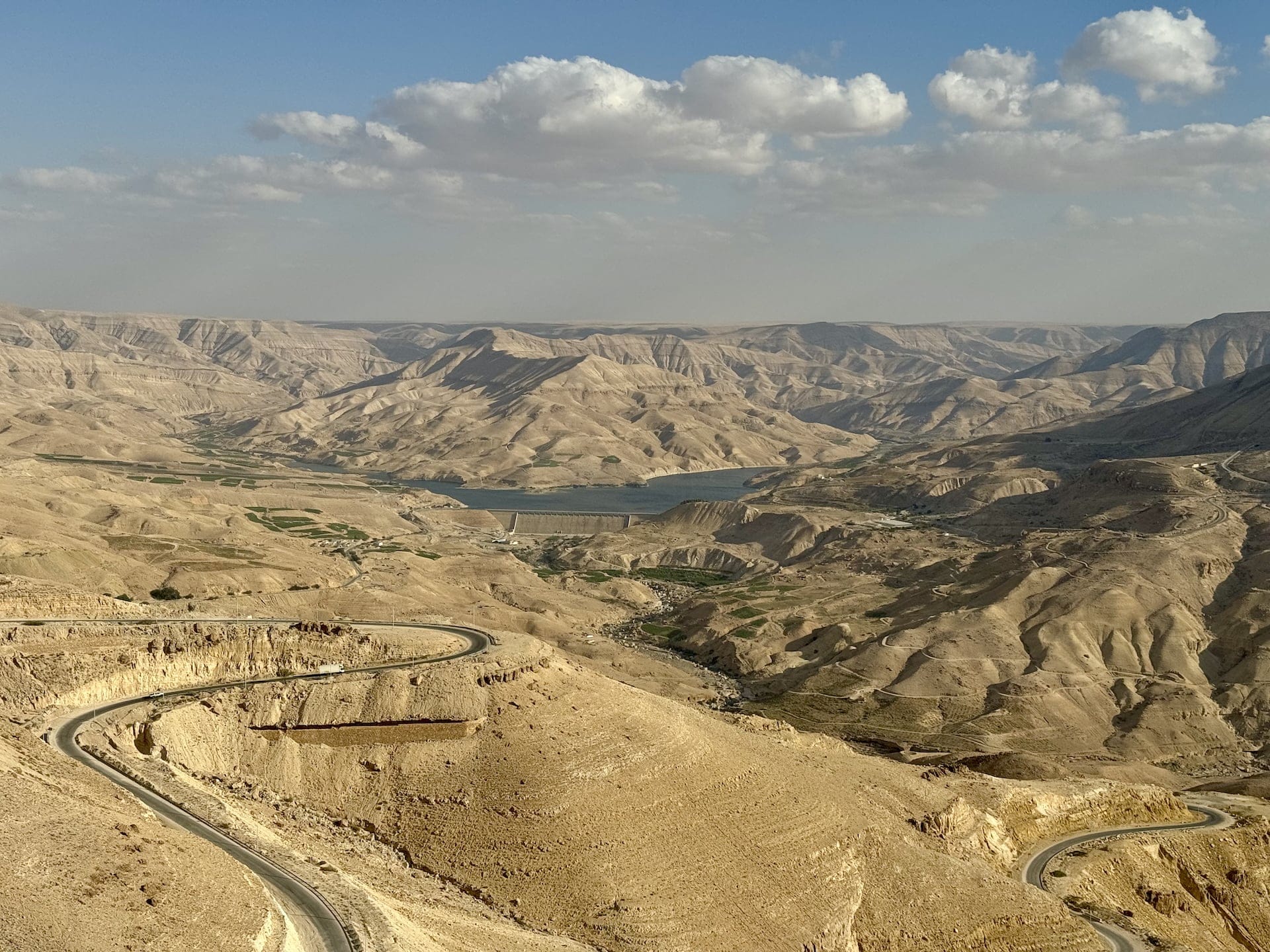
We returned our faithful (if quirky) Nissan to Monte Carlo where we’d collected it, took advantage of their complimentary airport shuttle, and boarded our evening flight home, minds brimming with a week’s worth of extraordinary experiences.
If possible, avoid refueling your car at the Gulf Gas Station near several rental companies before returning it, as they will almost certainly try to scam you – or pay very close attention to the posted prices and the exact amount of fuel pumped.
Beyond One Week: Expanding Your Jordanian Horizons
While our 7-day itinerary captures Jordan’s greatest hits, the country deserves more time if your schedule allows. A two-week journey would permit more leisurely exploration, with two days each at Petra and Wadi Rum, additional time in Aqaba and Amman, and perhaps excursions to less-visited treasures like the Desert Castles, Dana Biosphere Reserve, or the ancient ruins of Umm Qais.
For true Jordan enthusiasts, three weeks would barely feel sufficient to experience the country’s full spectrum of historical, cultural, and natural wonders. If you’ve discovered your own Jordanian hidden gems, we’d love to hear about them!
Jordan, with its extraordinary blend of ancient wonders and natural beauty, wrapped in genuine hospitality, ranks among our most memorable travel experiences. Even with just one week to spare, this compact kingdom delivers adventures that will linger in your memory long after the desert sand is brushed from your shoes.

